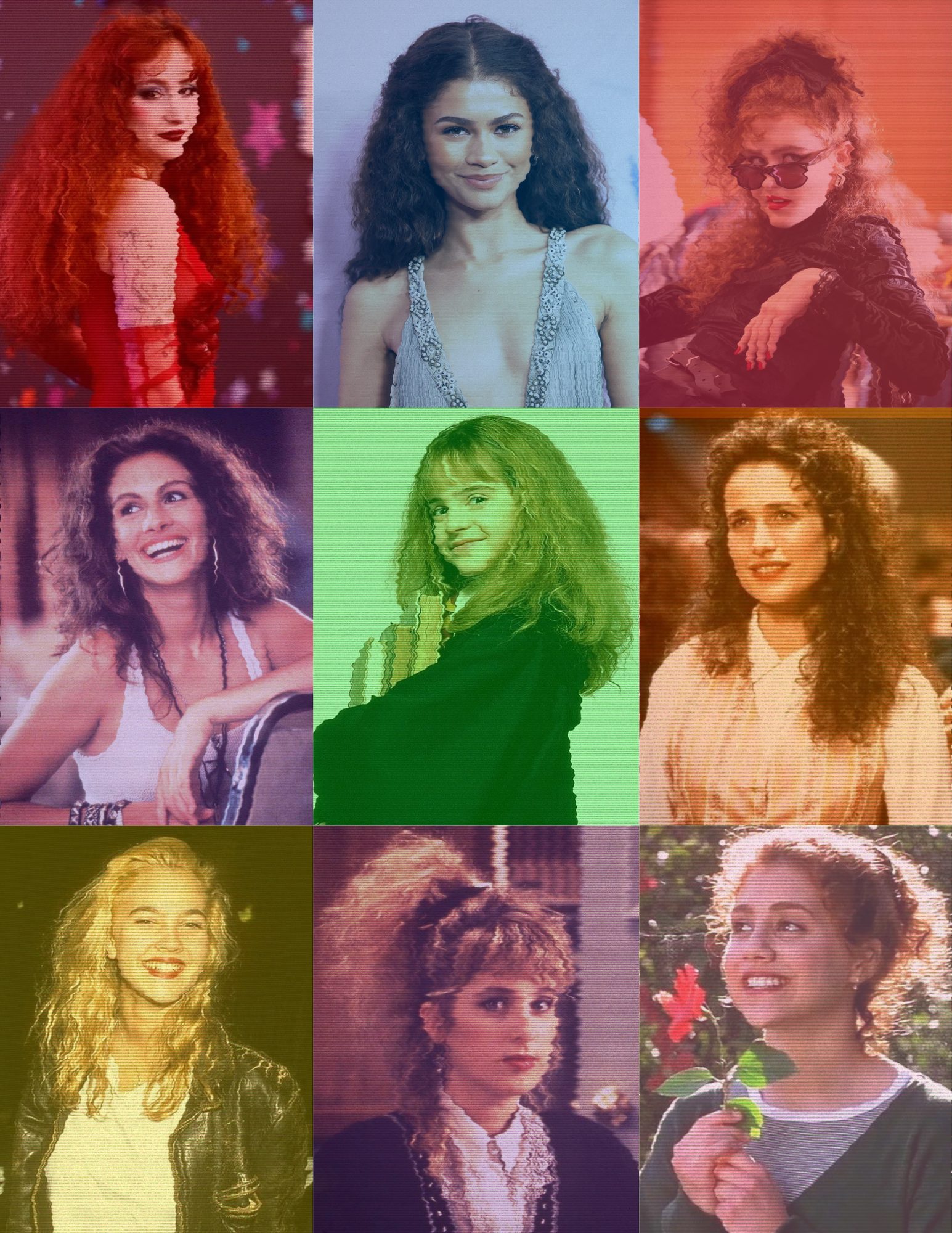Bigger Can Be Better: Learning to Embrace the Frizz
Bigger Can Be Better: Learning to Embrace the Frizz
Written by Sophie Hartstein
Art by Hailey Kroll
“Hair. Is. EVERYTHING.” — Fleabag, season 2 episode 5
I didn't know my hair was curly until I was seventeen years old. Growing up, my mother did my hair the way she did hers: wash, brush, air dry. That worked well enough, until I started to go through puberty and my hair texture demanded its time in the spotlight.
My curls come from my Jewish father’s side of the family. However, I never had a way of knowing this because the women in his family kept their hair straight. For all I knew, I was the only person on Earth cursed with big, puffy hair. Turning on the TV only made the situation worse: My hair was the “before.” The Hermione Granger; the Mia Thermopolis.
I went years thinking I had “bad” hair. Some sort of divine punishment, surely. All of my friends had smooth hair, soft to the touch where mine poofed out and demanded attention. I used all the same products they did, so why didn’t I have the same results? This destroyed my confidence as a young adult; I found myself unable to feel truly comfortable with how I looked.
Enter: the flat iron
In the sixth grade, my dad’s girlfriend at the time bought me one and taught me how to tame my unmanageable hair the way she had for decades. I thanked her and straightened my hair nearly every day, well into high school. I heat-damaged my hair for years, but it was the best I had ever felt about my appearance.
Quarantine was a time of self-reflection for many. Spending all that time inside, coupled with the emergence of TikTok and little else to do, made me finally realize that I had curly hair. I bought the classic bright yellow Marc Jacobs curl cream, a diffuser attachment for my unused blow dryer, and followed a TikTok video to diffuse my hair for the first time. Remarkably, I didn’t hate the results!
There was also little consequence to trying new things when no one was going to see you in real life. The transition to curly hair is a brutal one—there is a reason many opt for “the big chop,” I was just too attached to my length to give in to that necessity. But quarantine created the perfect environment for working through the awkward phase of hair that just looked unbrushed and tangled, when really there were curls underneath, begging to breathe. By the time the world opened back up again, my hair was a lot better looking, and a whole lot curlier. Teachers asked me if my hair was real; parents of friends demanded to know if I had gotten a perm—and didn’t believe me when I said the answer was no.
I look back on images of myself with sleek, heat-damaged hair and feel sad for her. I can't really blame her, though—she had no one to identify with.
Today, I am so glad young girls are getting to grow up with a variety of hair-related role models, but I can't help but feel a pang of jealousy. Chappell Roan climbed my Spotify stats earlier than most, but still only reached me in late 2020, around the time I was starting to understand my hair anyway. The idea of a generation of girls who look like me growing up with her at the forefront of popular culture makes me emotional, to say the least.
More and better hair representation is still helping me today, even at 22. After seeing Lisa Frankenstein for the first time, I went home and brushed out my curls with my fingers, considering for the first time that the frizz I try so desperately to weigh down with product could be a good thing.
My first watchthrough of Twin Peaks affected me similarly (and occurred on a similar timeline). Lucy, the sheriff’s secretary, wears her hair big and proud atop her head, often in an asymmetrical updo. She quickly became my favorite character and I found myself, like her, beginning to wear my hair higher and higher on my head.
It’s not just women embracing their curls that we need, it’s women embracing the frizz. Sophie from Mamma Mia! isn’t enough, I need Magenta from Rocky Horror. We’re long overdue for a mainstream comeback of the voluminous, brushed-out curls that defined ’80s movies and TV—and as a curly-haired viewer, I am more than ready for it.
Today I wouldn’t dream of flat ironing my hair regularly. Because I care too much about my hair to risk heat damage again, but even more so because I want to be the representation I didn’t have growing up. At that age, regularly seeing people with hair like mine walking down the street would have done me a world of good. If I can be that for even one girl with puffy, unruly hair, then it’s all worth it.

